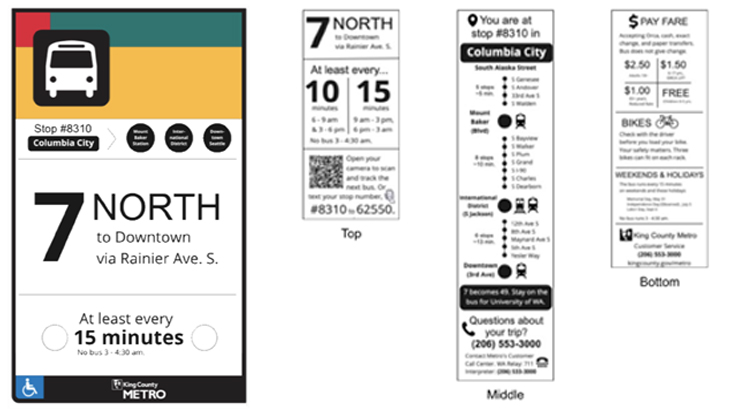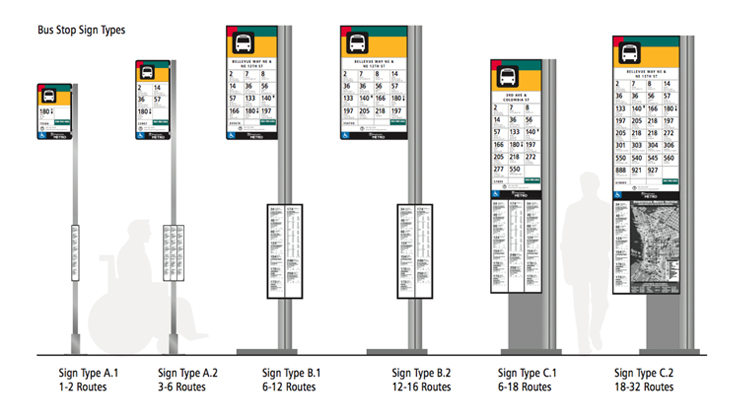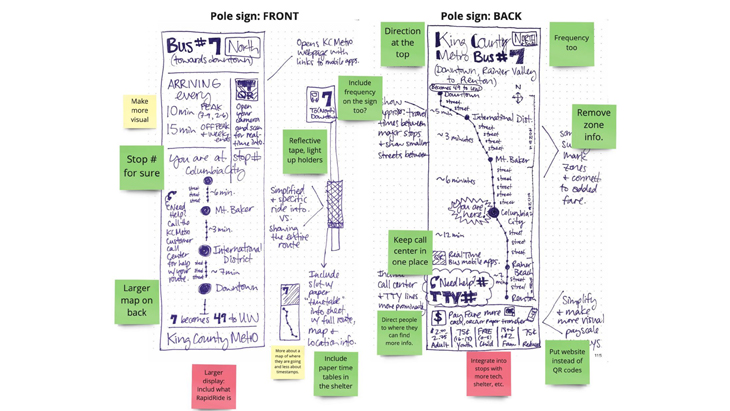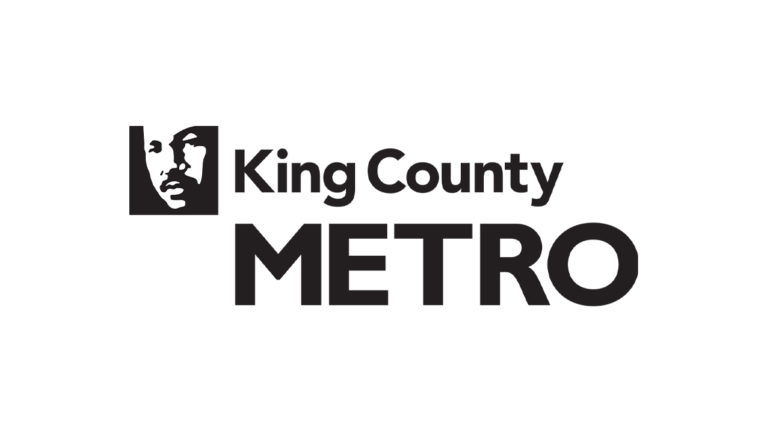
Proposed design
Issue
One of the biggest needs among Metro bus riders is consistent and reliable information about bus schedules, especially on routes that face changes to regular service. Currently, Metro’s service management information is outdated, and they’re working on a plan for how future service changes should be communicated to the public.
Spark
King County Metro is preparing for a service change on high frequency bus routes where bus schedules are based on general frequency instead of set schedule times. This change to frequency-based service will give Metro bus operators access to consistent breaks and more comfortable break spaces, but the change will result in less time-specific bus arrivals. The goal of this project was to help Metro talk about frequency-based service when they pilot this upcoming service change.
Overview
The project team analyzed static information at bus stops, surveyed Metro bus riders, and conducted in-depth, qualitative interviews with select survey respondents. Due to time constraints and COVID-19, the research was not conducted on the route where Metro will test their pilot. Instead, the team selected Route 7, a high frequency bus route in South Seattle that goes from Rainier Beach to Downtown Seattle. Route 7 has maintained high levels of ridership throughout the pandemic and the findings detail how Metro should talk about frequency when they test the pilot.
Innovation
The team defined four design principles that Metro could apply more broadly in static visual communication:
- Make static information concise and easy to understand.
Survey respondents and interview participants don’t like reading timetables and looking through entire route maps for specific information. They’d like information at bus stops to be simple and easy to scan. - Make static information more noticeable.
Respondents and participants are mostly unaware of holders. Besides making static information easy to understand, make it easier for customers to find. - Make static information more accessible.
Solving problems for people with disabilities will make information easier for everyone to engage with and will help us move our final designs closer to Metro’s vision of mobility. - Weave information about rider safety into final designs.
Rider safety was an important topic among survey respondents and interview participants. Incorporate related information about this issue wherever possible throughout final deliverables.

Current information design at Metro stops,

Ideation sketches.
Materials
Read the report
Impact
Below are five recommendations that were presented to Metro that summarize the research findings, SME perspectives, survey responses and participant feedback.
- Prioritize communication about real-time tracking information.
Customers like knowing where their buses are, even on high frequency routes. - Prioritize static, visual cues at bus stops, so bus riders know they’re on the correct routes.
For example, including directional markers (north, south, east, and west) on bus stop signs may reduce anxiety among new customers who aren’t sure if they’re at the correct stops or heading in the right direction. - Conduct more research on rider safety.
At night, customers don’t like waiting at stops, especially if they don’t know when their buses are coming. - Increase the number of buses heading southbound after 10 PM.
Or introduce a hybrid service where buses run on set schedules or arrive at specific times from 10 PM to 4 AM. - Communicate the frequency of bus arrivals consistently across static and digital information systems.
For example, under promise and over deliver. If the frequency of arrivals is between 10-15 minutes during peak hours and 15-20 minutes during regular hours, communicate arrival times as “at least every 15 minutes.”
Team
This HCDE project was sponsored by the Mobility Innovation Center with funding and mentorship from King County Metro.
About the HCDE Capstone Program: HCDE capstones provide the opportunity for UW students and industry partners to work together to address real-world issues using human-centered design and engineering. Capstone projects are student-run, large-scale projects that encompass two quarters of student work. Projects should touch on at least two components of the human-centered design process: user research, ideation, prototyping, implementation, and evaluation.
Academic Department
Faculty Leadership
Contributors
- Colleen McDevitt
- Diana Tan
- Daniel Tafoya


